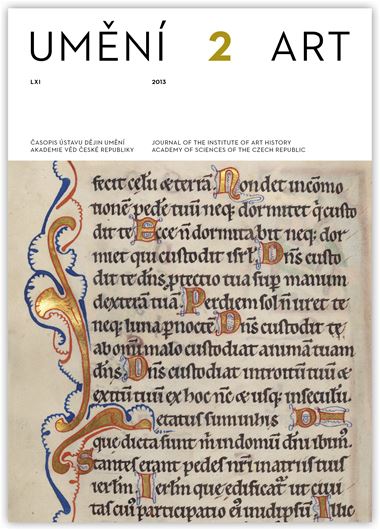Petr Uličný
Architektura pražských synagog 16. a 17. století
In the seventeenth century, the Prague ghetto was the largest Jewish enclave in Europe, and its approximately ten thousand inhabitants made up one-half of the entire population of Prague’s Old Town. This status was reflected in the interiors of its nine exquisitely furnished synagogues and several small private schools. Because of the singular continuity of settlement in the ghetto between the twelfth and the nineteenth centuries, Prague boasted structures built in different periods across this long stretch of time: from the probably Romanesque Old School, the early Gothic Old New Synagogue, the Renaissance Pinkas, High, New, and Maisel synagogues, to the early Baroque Cikán, Velkodvorská and Klausen synagogues. This collection of exemplary renditions of so many architectural styles was unparalleled in Europe. And yet little or only marginal attention has been devoted to the architecture of Prague’s synagogues, even though they are a singular phenomenon within the context of European synagogue architecture and the now demolished Baroque Cikán Synagogue and Velkodvorská Synagogue were unique even compared to Christian Czech work of that era. These latter two structures are the subject of this article. Cikán Synagogue was built before the year 1613 by Salomon Salkind (also known as ‘Cikán’ or ‘the Gypsy’) and his wife Golde. It was a monumental work of architecture. Its interior was articulated with pilasters and furnished with a three-storey high aron ha-kodesh. The structure of the synagogue, the work of an unknown builder, abandoned the use of Gothic elements, and must for its splendour rank among the best works of architecture not just in the Prague ghetto but in the Czech lands. Velkodvorská Synagogue, built after 1627 by Jacob Bassevi, drew inspiration from the design of the interior of Cikán Synagogue. Its unusual aron ha-kodesh was probably designed by architect Giovanni Pieroni, who in this may have been influenced by the contemporary architecture of Rome and Giovanni Battista Montana’s treatise of 1628. Unfortunately, both synagogues were demolished at the start of the twentieth century during the clearing of the Prague ghetto, and today fragmentary historical sources are the only source of information on them.
Full-text in the Digital Library of the Czech Academy of Sciences:
https://kramerius.lib.cas.cz/uuid/uuid:918aed0a-b67b-414c-89f9-581488f6894e
< back

